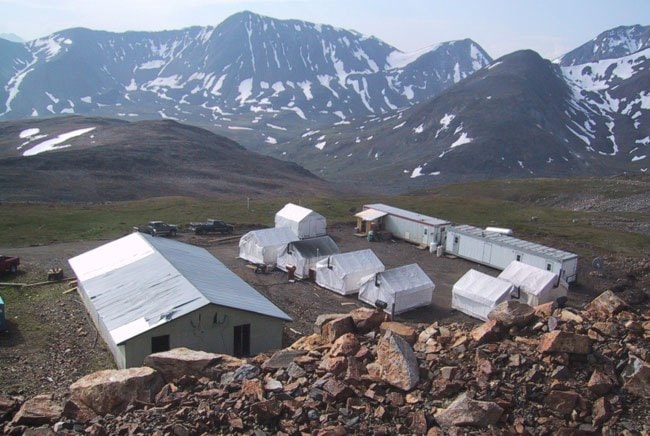The Yukon Environmental and Socio-economic Assessment Board has issued its final recommendations on North American Tungsten’s Mactung mine project.
The board says the project can go ahead as long as the company is able to use an existing road through N.W.T. to access the mine site, which straddles the territories’ border about 250 kilometers east of Ross River.
“We’re very happy. It’s a major milestone for the company,” said North American Tungsten board member Allan Krasnick, who holds responsibility for the Mactung project.
“We’re all quite excited about the opportunity to move from this stage to more detailed planning and development of the mine,” he said.
To access the mine site, the company will use the existing spur road, an extension of the Canol Road, which runs through the Northwest Territories for about 11 kilometres. The company had originally proposed building a new road that would remain entirely on the Yukon side of the border, in order to stay out of the N.W.T.‘s messy regulatory regime.
But it withdrew that plan last year on the advice of YESAB assessors, saying that the N.W.T.‘s devolution agreement would clean up the assessment issues on that side of the border.
The road was originally built decades ago but is in need of serious upgrading. The terrain is some of the most challenging in the territory.
“It’s only about 11 kilometres, so it’s not very much at all, but it is pretty steep,” said Krasnick, chuckling.
The company has yet to apply to the Mackenzie Valley Review Board for approval of the road project, but that will happen relatively soon, he said.
The other major stipulation in the YESAB approval is that the company must dispose of tailings and waste rock in underground shafts that sit below the natural water table. If tailings and waste rock are deposited above the table, there is concern that contaminants could seep down into the water, the recommendation document says.
Krasnick said that shouldn’t be an issue, in part because the company has recently finished refining a new state-of-the-art water treatment facility at its other major tungsten mine, Cantung. Last March that system was still in the testing phase, but it’s now fully operational, he said.
“That’s worked. We’ve now built a permanent plant. We’ve applied to the Mackenzie Valley Review Board to increase the amount of water we treat there.
“Everything’s nice and clean now. We tell Jason (McKenzie, the Cantung mine manager) that he’s got to take a sip from a glass of water out of that plant every day,” Krasnick joked.
The company plans to use the same technology at Mactung to treat the water there as well. Details will unfold soon, once the company reaches the next phase of its planning.
“There were a number of changes we made based on comments made and concerns raised. We’re moving into detailed planning this summer and will involve the Ross River Dena Council in that,” he said.
The Mactung project is one of the largest tungsten deposits in the world. Founded in 1962 by F.J. Allen (for whom the mountain is named), Mactung holds an estimated 33 million tonnes of tungsten ore. The project is expected to have an underground lifespan of 11.5 years, with the possibility of expanding to 17 years through open-pit mining. It will employ 250 people during construction and around 200 during operations,” Krasnick said.
“We still need a quartz-mining licence and a water licence. We probably won’t start construction for about a year and a half, I’d say,” he said.
The company also has to line up financing for the project, but Krasnick said the company has been in touch with potential backers throughout the process and he isn’t worried about finding the funds in time to start building.
Yukon’s economic development minister Currie Dixon said he was happy with the YESAB approval.
“We want to have a healthy mining industry and you need to have a healthy mining pipeline right from the exploration stage all the way up to the operating mine stage,” Dixon said, adding that Mactung is a perfect example of a project moving successfully along that pipeline.
“We now have two mines that have finished the assessment phase, Mactung and Victoria Gold’s Eagle Mine. That represents around three quarters of a billion in needed investment,” Dixon said.
Contact Jesse Winter at
jessew@yukon-news.com
